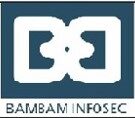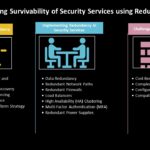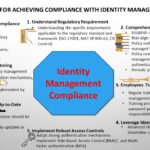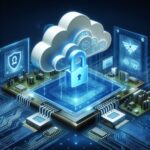
In today’s interconnected digital landscape, the proliferation of cyber threats poses significant risks to organizations of all sizes and across all industries. In 2023, some cyber-attacks were acknowledged and reported, these include, Caesars Entertainment, Royal Mail, MOVEit and the Federal Aviation Administration (FAA). To navigate this complex and ever-evolving threat landscape, businesses need robust strategies and frameworks in place. Cybersecurity frameworks serve as essential tools for organizations to establish, manage, and improve their cybersecurity posture effectively.
There are several recognized cybersecurity frameworks, each with its unique focus, methodologies and guidelines tailored to specific organizational needs. Nevertheless, cybersecurity frameworks generally serve a common purpose; they provide valuable and structured guidelines, best practices, and standards for organizations seeking to strengthen their cybersecurity posture. Depending on factors such as industry, regulatory requirements, and organizational objectives, organizations may choose to adopt one or more of these frameworks to address their specific cybersecurity needs.
Widely Recognized Cybersecurity Frameworks:
- NIST Cybersecurity Framework (CSF).
- ISO/IEC 27001.
- CIS Controls (formerly SANS Critical Security Controls).
- NIST Special Publication 800-53.
- COBIT (Control Objectives for Information and Related Technologies).
- Payment Card Industry Data Security Standard (PCI DSS)
- FISMA (Federal Information Security Management Act).
- FAIR (Factor Analysis of Information Risk).
- Capability Maturity Model Integration (CMMI).
- Cybersecurity Maturity Model Certification (CMMC).
- MITRE ATT&CK (Adversarial Tactics, Techniques, and Common Knowledge).
- Health Insurance Portability and Accountability Act (HIPAA).
- ISA/IEC 62443.
- General Data Protection Regulation (GDPR).
NIST Cybersecurity Framework (CSF).
Developed by the National Institute of Standards and Technology (NIST), the CSF is a widely adopted framework in the United States. The CSF provides a voluntary framework based on existing standards, guidelines, and best practices for managing cybersecurity risk. It consists of five core functions: Identify, Protect, Detect, Respond, and Recover, which help organizations assess and improve their cybersecurity posture. The framework is designed to be flexible and adaptable to various industries and organizational sizes.
ISO/IEC 27001.
The ISO/IEC 27001 is an international standard for information security management systems (ISMS) published by the International Organization for Standardization (ISO) and the International Electrotechnical Commission (IEC). The standard provides a systematic approach for establishing, implementing, maintaining, and continually improving an organization’s ISMS. The standard covers risk management, security policies, and controls. ISO/IEC 27001 certification demonstrates that an organization has implemented appropriate security controls and measures to protect its information assets.
CIS Controls (formerly SANS Critical Security Controls).
The Center for Internet Security (CIS) Controls is a set of best practices for cybersecurity developed by a global community of experts. The framework is designed to help organizations establish a baseline for cybersecurity for cybersecurity defenses and improve their overall security posture. It consists of 20 prioritized security controls divided into three categories: Basic, Foundational, and Organizational, covering areas like asset management, continuous vulnerability assessment, and data protection to mitigate the most common cyber threats and vulnerabilities. They are regularly updated based on emerging threats and best practices.
NIST Special Publication 800-53.
This publication provides a catalog of security and privacy controls for federal information systems and organizations. It covers a wide range of security areas, including access control, incident response, and system and communications protection. It is widely adopted by government agencies and contractors.
COBIT (Control Objectives for Information and Related Technologies).
COBIT is a framework developed by ISACA (Information Systems Audit and Control Association) for governing and managing enterprise IT. While not exclusively focused on cybersecurity, COBIT helps organizations align IT with business objectives, manage risks, and ensure compliance with regulations and standards. COBIT provides a set of processes and controls covering various domains, including information security, risk management, and governance. The framework is particularly useful for organizations concerned with regulatory compliance.
Payment Card Industry Data Security Standard (PCI DSS).
Developed by the Payment Card Industry Security Standards Council (PCI SSC), PCI DSS is a set of security standards designed to ensure the secure handling of credit card information. It applies to organizations that store, process, or transmit cardholder data. The standard includes requirements for network security, access control, encryption, and regular testing of security systems to prevent credit card fraud and data breaches. PCI DSS compliance is mandatory for organizations that manage payment card data.
FISMA (Federal Information Security Management Act).
FISMA is a United States federal law that establishes cybersecurity requirements for federal agencies and their contractors. It outlines a framework for developing, implementing, and managing information security programs based on NIST standards within the federal government.
FAIR (Factor Analysis of Information Risk).
FAIR is a risk management framework that focuses on quantifying and analyzing information security risks. It provides a model for understanding, analyzing, and measuring information risk in financial terms. FAIR is often used in conjunction with other frameworks and standards.
Capability Maturity Model Integration (CMMI).
While not exclusively a cybersecurity framework, CMMI is a framework that provides guidance for improving processes in software development and other areas of an organization. It defines maturity levels that indicate the organization’s capability to manage and continuously improve its processes. CMMI helps organizations streamline processes, improve quality, and achieve greater efficiency and effectiveness.
Cybersecurity Maturity Model Certification (CMMC).
CMMC is a cybersecurity framework developed by the US Department of Defense (DoD) to enhance the cybersecurity posture of defense contractors and subcontractors. CMMC aims to ensure that defense contractors have adequate cybersecurity measures in place to protect controlled unclassified information (CUI). It consists of five maturity levels ranging from basic cybersecurity hygiene to advanced practices, each with specific cybersecurity practices and processes. CMMC requires contractors to demonstrate compliance with specific cybersecurity practices to bid on DoD contracts.
MITRE ATT&CK (Adversarial Tactics, Techniques, and Common Knowledge).
ATT&CK is a knowledge base developed by MITRE that provides information on the tactics, techniques, and procedures used by adversaries during cyber-attacks. It is not a framework for implementation but is widely used for threat intelligence, red teaming, and improving detection and response capabilities.
Health Insurance Portability and Accountability Act (HIPAA).
The Health Insurance Portability and Accountability Act (HIPAA) is a US federal law that sets standards for the protection of sensitive patient health information (PHI). It aims to ensure the confidentiality, integrity, and availability of PHI and mandates safeguards such as access controls, encryption, and audits to protect against unauthorized access, use, or disclosure. HIPAA applies to healthcare providers, health plans, healthcare clearinghouses, as well as their business associates.
ISA/IEC 62443.
Developed by the International Electrotechnical Commission (IEC), ISA/IEC 62443 is a series of standards addressing the cybersecurity of industrial automation and control systems (IACS). It provides a framework for protecting critical infrastructure, such as power plants and manufacturing facilities.
General Data Protection Regulation (GDPR).
While not solely a cybersecurity framework, GDPR is a European Union regulation that focuses on protecting the personal data and privacy of EU citizens. GDPR requires organizations to implement appropriate technical and organizational measures such as data encryption, data minimization, and regular data protection assessments to protect personal data and prevent data breaches. It outlines requirements for the collection, processing, and storage of personal data, with significant penalties for non-compliance. GDPR applies to organizations that process personal data of EU residents, regardless of where the organization is located.
Importance of Cybersecurity Frameworks
The importance of cybersecurity frameworks cannot be overstated. Adoption and implementation of cybersecurity frameworks offer several key benefits for organizations:
Risk Management. Cybersecurity frameworks provide structured methodologies for identifying, assessing, and managing cybersecurity risks effectively. By following established guidelines and best practices, organizations can prioritize their security efforts and allocate resources efficiently thereby strengthening their cybersecurity posture and reducing the likelihood and impact of cyber threats and attacks.
Regulatory Compliance. Many industries are subject to stringent regulatory requirements governing data protection and cybersecurity practices. Cybersecurity frameworks align with these regulatory requirements and industry standards, such as GDPR, HIPAA, and PCI DSS. Implementing a recognized framework helps organizations demonstrate adherence to these requirements to avoid the risk of non-compliance, associated penalties, and reputational damage.
Standardization and Consistency. By adhering to a cybersecurity framework, organizations can establish common languages, processes, and controls for managing cybersecurity risks. Standardization promotes consistency across organizational operations and facilitates communication both internally and with external stakeholders, regardless of size or complexity.
Continuous Improvement. Implementing a cybersecurity framework enables organizations to adopt an initiative-taking approach to cybersecurity. By regularly assessing and updating their security posture based on framework recommendations, organizations can continuously improve their resilience to evolving cyber threats.
Cyber Resilience. Cybersecurity frameworks emphasize proactive measures for incident detection, response, and recovery capabilities. By adopting cybersecurity frameworks, organizations can better protect critical assets and operations, minimize the impact of cyber incidents, recover from cybersecurity incidents promptly, and maintain business continuity.
Stakeholder Confidence. Adherence to recognized cybersecurity frameworks enhances stakeholder confidence, including customers, partners, investors, and regulatory authorities. It signals a commitment to security best practices, the ability to protect sensitive information and maintaining the trust and integrity of business operations.
Resource Optimization. Frameworks enable organizations to allocate resources efficiently by focusing on high-priority security initiatives and investments based on identified risks and business needs.
In conclusion, cybersecurity frameworks provide organizations with invaluable guidance and structure for managing cybersecurity risks, achieving compliance goals, and enhancing resilience against cyber threats. Adoption of a cybersecurity framework is not just a best practice; it’s a strategic imperative for organizations looking to safeguard their assets, reputations, and long-term success in the face of evolving cyber threats.







3 thoughts on “Understanding the Vital Role of Cybersecurity Frameworks”